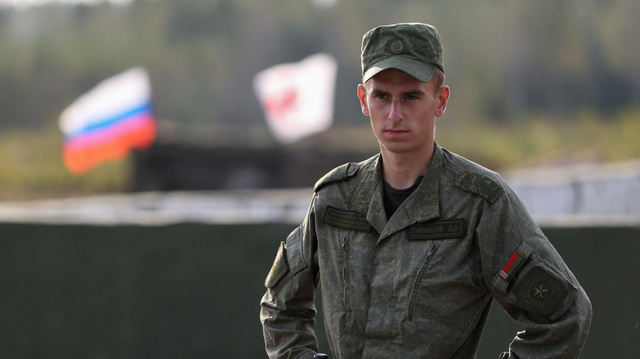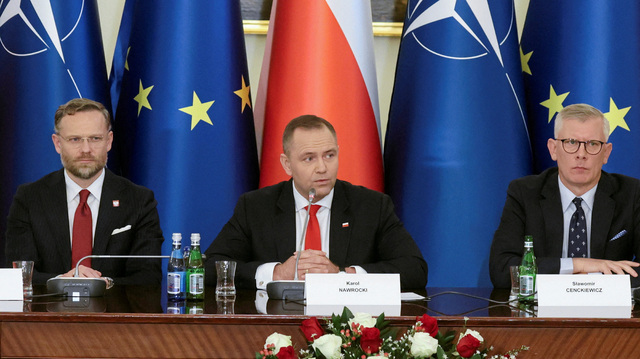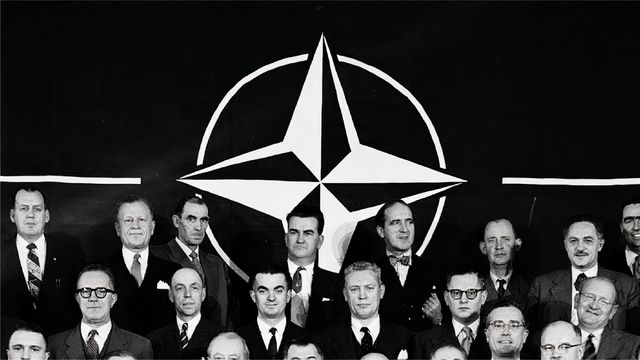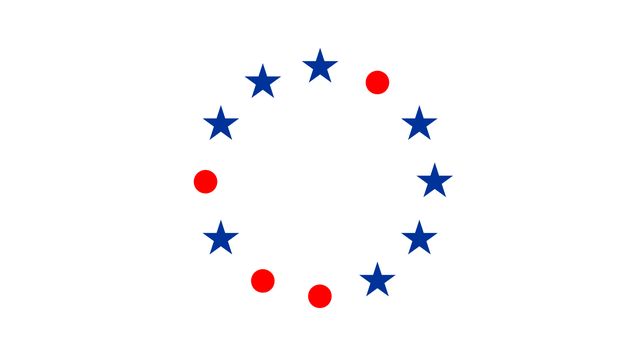The Visegrád Four and the Security of NATO’s “Eastern Flank”
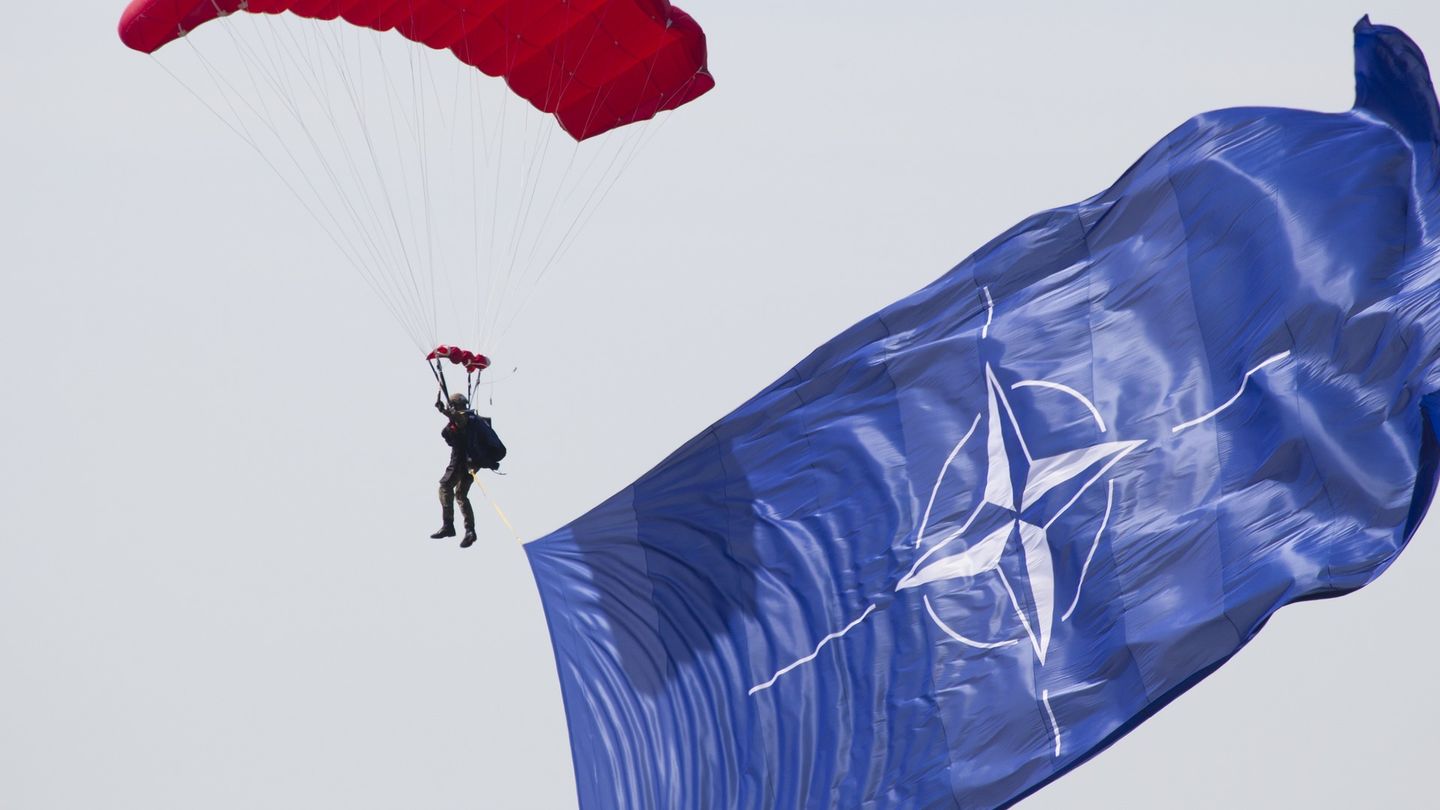
paper
Eoin Micheál McNamara wrote a Policy Paper called The Visegrád Four and the Security of NATO’s “Eastern Flank”.
Summary and Key Recommendations
Burden-sharing has regularly been a politically contentious matter within NATO. Since the onset of the Ukraine crisis in 2014, maintaining the security of NATO’s “Eastern flank” has instilled the expectation that all NATO allies produce contributions of value for a credible collective defence posture. The US has long stressed that each NATO member must do its fair share to uphold the collective security that is consumed by all within the transatlantic club. NATO’s four Visegrád (V4) allies – the Czech Republic, Hungary, Poland and Slovakia – are either immediately proximate to, or amongst, the “Eastern flank” states most vulnerable to Russian aggression. The V4 are therefore exposed to many security risks should NATO become feeble. With this at stake, one might expect the V4 to display strong performance in providing military assets and political support to further galvanize NATO burden-sharing in Europe. However, this paper makes the argument that there remains considerable scope for the V4 states to improve their contribution to NATO’s collective defence posture. This paper has five key policy recommendations:
For the V4 together:
In addition to military infrastructure, some government investments in physical civilian infrastructure could hold the dual potential to improve NATO’s military mobilization fluency. All V4 governments should examine this possibility when planning major civilian infrastructure projects;
For the Czech Republic:
Prague needs to use the advantage of its positive relations with Germany to consolidate itself as a key contact point between V4 governments and Germany. Mediation should make sure that wider disagreements do not limit specific opportunities for closer German-V4 defence cooperation in important areas pertaining to NATO policy;
For Hungary:
Hungary (as well as other V4 states) should quickly phase out the Russian/Sovietmanufactured equipment used by its military. The ongoing need to maintain this equipment with services procured from the Russian defence sector risks creating political controversy within NATO. Risk also surrounds access to servicing options and spare parts as this access is contingent on political relations with Russia;
For Poland:
Coinciding with Warsaw’s recent “Fort Trump” proposal, Poland’s interventions in recent discord between the US and Germany have not been helpful for NATO’s collective action ethos. Collective action allows NATO to function effectively, any diplomatic initiative that could (perhaps even unintentionally) undermine this must be carefully considered;
For Slovakia:
The Slovak government should reconsider an agreement with the US to allow Slovakia to receive funding from the European Deterrence Initiative (EDI) to modernize its air fields at Sliač and Kuchyňa. If upgraded, use of these facilities by the Slovak military and Bratislava’s NATO allies could alleviate some of the logistic challenges that NATO security provision for Bulgaria and Romania currently encounters.
Main Argument
This paper expresses the argument that there is considerable scope for the V4 states to improve their contribution to NATO’s collective defence posture. For Poland, it is important that a firm focus on national defence is balanced with wider cooperation considerations (particularly with Germany) that contribute to broader security for NATO’s “Eastern flank”. For the Czech Republic, Hungary and Slovakia, it is important that all three states do not “free-ride” on the security produced by other NATO allies and – within their resources – credibly contribute to the strengthening of NATO’s collective defence posture.
Introduction
Burden-sharing has regularly been a politically contentious matter within NATO.1 Since the onset of the Ukraine crisis in 2014, maintaining the security of NATO’s “Eastern flank” has instilled the expectation that all NATO allies produce contributions of value for a credible collective defence posture. The US has long stressed that each NATO member must do its fair share to uphold the collective security that is consumed by all within the transatlantic club. Much doubt has been cast on NATO’s future development since the beginning of Donald Trump’s US presidency in 2017. Trump’s references to NATO burden-sharing issues have frequently been abrasive. Some European allies have been castigated, with reports published that the president has actually considered withdrawing the US from NATO. US disengagement has prompted some European leaders to also express doubt on NATO’s continued viability. Most prominently, French President Emmanuel Macron has referred disparagingly to NATO as now “brain dead”.
Against this political context, NATO’s burden-sharing arrangements become a focal-point of acute importance. If allies reduce their contributions to collective defence commitments, NATO will suffer a bleak future. The four Visegrád (V4) allies – the Czech Republic, Hungary, Poland and Slovakia – are located either immediately proximate to, or amongst, the “Eastern flank” states most vulnerable to Russian aggression. Poland must balance a firm focus on its national defence with broader considerations for the security of the “Eastern flank”. The Czech Republic, Hungary and Slovakia are not quite pressured by the same urgency. However, within NATO, it would remain politically damaging for any of these three states to “free-ride” and not – within their resources – contribute effectively to NATO’s collective defence posture where appropriate. Political marginalization might also result should any V4 state develop an over-duplicitous foreign policy that solicits different benefits from cooperation with Russia at the expense of the political solidarity that crucially underpins NATO’s collective action.
This paper makes the argument that there is considerable scope for the V4 states to strengthen their commitment to NATO’s collective defence posture. The paper is divided into five sections. Section one explains the main features of the military mobilization fluency that serves NATO’s collective defence objectives. Section two focuses on Hungary, arguing that Budapest has been active in undertaking rotations for NATO’s Baltic Air Policing, but its government’s often proRussia foreign policy creates doubts over just how far Hungary’s NATO solidarity might extend. Section three explains that Slovakia often chooses ambivalence in its foreign policy that addresses Europe’s current East-West fragmentation. Slovakia’s recent reluctance to strengthen cooperation with the US to develop two air fields of defensive potential for the wider “Eastern flank” has been a missed opportunity for Bratislava to further support NATO’s deterrence efforts. However, both the Czech Republic and Slovakia support multinational battlegroups under NATO auspices in the Baltic states and Czech public support for some NATO initiatives, such as Operation Dragoon Ride (ODR) in 2015, has been positive. Section four focuses on Poland, arguing that, despite Warsaw’s strong prioritization of national defence, it must exercise caution in its delicate political relations with Germany. Cooperation between Berlin and Warsaw remains vital to optimize the supply-chains that can facilitate a more extensive NATO military mobilization from west to east. Section five offers a summary and presents policy recommendations.
NATO’s Quest for Mobilization Fluency
Progressing from the Ukraine crisis in 2014, NATO’s defence posture for its “Eastern flank” has been developed through a “flexible and scalable” outlook. Rather than a comprehensive military deterrence presence, a lighter military footprint to signal “vigilance” has thus far been emphasized. This defence posture consists of two different approaches. The enhanced Forward Presence (eFP) comprises battalion sized multinational battlegroups; one in each of the Baltic states and in Poland ed by a different NATO Framework Nation.2 NATO’s tailored Forward Presence (tFP) covers Romania and Bulgaria and is focused on improving the capacity of a Romanian-led multinational brigade; developing the NATO Headquarters for the Multinational Division Southeast; and enhancing the broader situational awareness of NATO forces at Black Sea flashpoints through the increased frequency of military exercises.
The logic of “scalability” accommodates the contingency that, should Europe’s security situation deteriorate further, increased military mobilization from NATO’s wider force generation sources (starting with the Very High Readiness Joint Task Force [VJTF] and the wider NATO Response Force [NRF]) can then follow suit. In a crisis, a NATO mobilization upwards of 25,000-30,000 troops from west to east will often have to rely on civilian infrastructure encompassing: “rail connections, rolling stock, ports, [and] reinforced bridges”. This “scalable” defence posture will also greatly hinge on the durability of the supply-chains required at short notice to service military mobilization. In addition to the essential physical defence capabilities and military logistics involved, consistently strong levels of political support will be a crucial facilitator in allowing NATO’s collective defence posture to function effectively.
Hungary between East and Wes
The actions and rhetoric of Prime Minister Viktor Orbán’s Hungarian government have sometimes been controversial vis-à-vis wider EU and NATO policy on Russia. According to András Rácz, Orbán has sought an “ideological, illiberal” alternative to Western liberal democracy. This has sometimes come with an “openly” pro-Russia foreign policy as Vladimir Putin’s later presidential terms have also stressed a robustly conservative ideology. Due to the involvement of Rosatom and the investment of Vneshekonombank in the major nuclear power plant at Paks, Russia holds strong leverage in Hungary’s energy sector. Conversely, Orbán’s government has sometimes been on poor terms with other EU member states, most prominently during the European Immigration Crisis in 2015.
There has also been moderate controversy in the military sector. Batches of Hungary’s Soviet-manufactured Mi-24 helicopters have been sent for refurbishment in Russia in 2018 and 2019. A number of NATO’s Eastern members have retained the use of Soviet- or Russian-manufactured military equipment. There was “uproar” in Lithuania in 2016 when a plan to send two of its military’s Soviet-made Mi-8T helicopters to Russia for overhaul was vetoed by its foreign ministry. Discussing Lithuania’s subsequent 2019 plan to replace these with UH-60M Black Hawk helicopters from the US, defence minister Raimundas Karoblis described the maintenance demands for the Mi-8 series as “expensive, [and] constantly required” as well as being “high risk” as access to spare parts is often dependent on Russian supplies. There has recently been politically divisive controversy in Bulgaria over whether to have the country’s Soviet era MiG-29 fighter jets refurbished in Poland or in Russia. Critics of the Russian maintenance option have pointed to the heightened political risks involved. In 2019, Bulgaria’s government attempted to settle this thorny issue with the decision to begin a $1.26 billion purchase of eight F-16 fighter jets from US-based Lockheed Martin to replace its MiG-29 fleet. This decision was first vetoed by President Rumen Radev on the grounds that cross-party consensus for the procurement had not been achieved, only for Bulgaria’s parliament to then reverse this veto. With the F-16s not expected to be delivered to Bulgaria until late 2022, Sofia will have to spend approximately €8.2 million on repairs and spare parts over the intervening years to ensure that its MiG-29s remain “airworthy”. Carrying implications for the capabilities available to NATO, the political confusion in Bulgaria illuminates the risks that can be encountered when seeking to switch from Soviet/Russian-sourced equipment to Western-manufactured military technology.
Hungarian decision-makers have perceived these risks with less urgency. Then Chief-of-Staff, General Tibor Benkő stated in 2018 that Hungary’s Mi-24s will remain in use until 2025 while stressing that Budapest is “not obliged to buy military equipment exclusively from NATO member states”. This might be a ploy to keep procurement options open, to maximize competition among potential suppliers and thus lower costs for future orders. However, Russia’s state-controlled defence contractors have leverage to offer significantly discounted rates should this support a political strategy to influence discontent within NATO. There is a risk that those sympathizing with Moscow in Hungarian politics would be compelled to support Russian procurement options. Nevertheless, as a major procurement for Hungary’s wider Zrinyi 2026 military development programme, twenty H145M helicopters were purchased from Airbus in 2018. This is an indication that Budapest is still likely to favour Western manufacturers for its continuing military modernization.
Hungary has not obstructed the main fundamentals of the wider EU/NATO consensus on Russia since 2014. Despite some pro-Russian sympathies in its foreign policy, Budapest has not sought to divisively veto EU sanctions. This support has however not always been completely watertight. Complying with EU trade sanctions, July 2019 saw Romania deny transit through its territory to a consignment of ten armoured personnel carriers travelling from Russia to Serbia. Hungary instead permitted the transit of this cargo through its territory, citing its transportation in a civilian aircraft as the reason for its consent. Hungary has contributed to the increased capacity required for NATO’s Baltic Air Policing post-2014; its air force has recently led this mission between April and September 2019. Budapest should not be praised for simply meeting its NATO commitments. Nevertheless, participation demonstrates that Hungary will internalize significant political risks to support NATO collective action in this important area. With NATO fighter jets routinely scrambling to escort or monitor Russian military aircraft, there is a constant possibility that an incident likely to stoke controversy with Russia might occur. Budapest’s participation is a tacit acknowledgement that it benefits from NATO’s collective defence provision and thus must contribute to its durability, despite cordiality with Moscow in some other policy areas.
NATO’s Wales Summit in 2014 confirmed the creation of NATO Force Integration Units (NFIUs) in “Eastern flank” states. NFIUs “help facilitate the fast and effective receiving, staging, onward movement, and deployment of Allied forces”. Finalizing the capacity for the NFIU in Hungary in late 2016 happened with a delay. However, this task also proved a challenge elsewhere. For example, Estonia’s NFIU only reached “full capacity” in June 2016. On becoming fully operational, Hungary’s NIFU, among others, stands as an asset for NATO’s mobilization fluency. With an explanation attempting to ease the East-West contradiction in Hungary’s foreign policy, Foreign Minister Péter Szijjártó has described Budapest’s geopolitical outlook as “pragmatic” and “balanced”. When East-West conflicts have broken out in Europe, it has been the central European states “that have lost”, Hungary thus works towards EU-Russia rapprochement, but this does not mean that it will abandon its NATO obligations.
Czech Republic and Slovakia: Ambivalent Allies?
The central European outlook that Szijjártó expresses is the type of perspective misinterpreted by some commentators to stress that “neutrality” is becoming a popular foreign policy direction for some NATO allies in Europe. The evidence to support this among the V4 is mixed, although grounds remain to question full commitment to NATO in some areas. A recent public opinion survey sampled from populations across Europe found that a large proportion of those polled supported neither the US or Russia in the Ukraine crisis. This tendency was present even among NATO’s newer Eastern members that have historically been troubled by fraught relations with Moscow. Excluding Poland, commentaries elsewhere have argued that other V4 states have “bowed to Putin’s power” and refrained from fully supporting NATO defence measures. Jackson Diehl has argued that this was seen in the immediate wake of the Ukraine crisis. In 2014, then Slovak Prime Minister Robert Fico rejected the prospect of his country hosting a NATO troop presence, while his Czech counterpart Bohuslav Sobotka “pre-emptively” announced that his country would also not require a NATO rotation. These actions have been interpreted as efforts to preserve amicable relations with Russia at the expense of support for NATO as a collective front.
Similar political sentiments have also crept into controversies over the development of physical military assets. In 2018, Slovakia and the US entered into talks to possibly use $46 million from the European Deterrence Initiative (EDI) to modernize air fields at Sliač and Kuchyňa. These talks ended controversially in 2019, with a spokesperson for Slovakia’s Ministry of Defence (MoD) stating that an agreement on the terms discussed would include provisions for the hosting of NATO troops and other military assets that “would threaten the sovereignty of Slovakia”. This line has not always been the domestic consensus. Slovakia’s Ministry of Foreign Affairs (MFA) has disagreed with the MoD’s outlook and President Andrej Kiska has argued that options for deeper defence cooperation with the US should not have been closed. As well as a splinter for NATO’s collective solidarity, this is disappointing for the alliance’s military mobilization fluency. The proposal in these US-Slovakia talks to “increase capacity for fuel storage” at some Slovakian air fields would have strengthened the logistic options serving NATO’s tFP in particular. Were the security situation around Romania to deteriorate, NATO assets would have to be mobilized from the north and west with the Carpathian Mountains severely limiting rail and road transport options. The transport of NATO reinforcements by air therefore becomes vital to compensate for this difficulty. Were it to possess the appropriate military hosting capacities, geographic proximity dictates that Slovakia could make a significant contribution in this area. Modernized air basing capacities would: accommodate further NATO air power; increase options for the refuelling of NATO aircraft; and create further possibilities for NATO military exercises to improve situational awareness. The NIFU in Slovakia was scheduled to reach full capacity in June 2017, a year after some other NATO states. Modest compared to the defensive potential that its air fields could hold, Slovakia’s NIFU still stands as an asset for NATO’s broader mobilization fluency. Units from the Slovak military currently support NATO’s Canadian-led eFP battlegroup in Latvia.
Recent developments centred on the Czech Republic have held some positive signs for NATO’s mobilization fluency. It has been claimed that inherently anti-NATO propaganda from Russia has had partial success in shaping public discourse within the V4 states. As NATO’s ODR began in 2015, it was feared that NATO’s military conveys transiting from Germany to the Baltic states for major exercises would receive an ambivalent reception as they progressed through Czech territory. A surprise to some commentators, 82 percent of surveyed Czech citizens approved of the NATO transit route. The Czech military has also rotated units with the eFP battlegroup in Latvia and the Germanled battlegroup in Lithuania. In September 2019, the Czech Air Force started a further contribution to NATO’s Baltic Air Policing, with aircraft based at Estonia’s Ämari Air Base. With previous Czech rotations stationed at Šiauliai Air Base in Lithuania, this offers a further opportunity for the Czech military to improve situational awareness for eFP.
Poland and Wider “Eastern Flank” Security
Contrary to the foreign policy approaches of its V4 counterparts, Poland holds a more severe perception of the Russian military threat. Within the EU, Poland’s current Law and Justice (PiS) government led by Prime Minister Mateusz Morawiecki has been criticized for its domestic illiberalism. By contrast, Warsaw’s transatlantic diplomacy has sought to leverage ideological cordiality with the Trump administration to reinforce Poland’s national defence priorities. President Andrzej Duda’s early 2019 proposal for the construction of a large and permanent US military base in Poland named “Fort Trump” received considerable international media attention. The proposal mooted an offer of $2 billion in Polish funding for the project. Poland currently hosts a moderately-sized approximately 4,000-strong US military presence under a rotational arrangement. This conforms to the provisions of the 1997 NATO-Russia Founding Act.
Discourse spurred on by Poland’s “Fort Trump” idea has exposed weaknesses in the transatlantic consensus that facilitates NATO’s collective action. Duda’s proposal coincided with President Trump’s publicly expressed dissatisfaction towards Germany over the planned construction of the Nord Stream II gas pipeline in cooperation with a company whose main shareholder is Russia’s Gazprom. Relations between Trump and Chancellor Angela Merkel have been uncomfortable since 2017. There were hints from the Trump administration that long-established US military bases in Germany could be vacated in favour of relocating the assets there to Poland instead. While vague and underdeveloped, this was a vision that Warsaw appeared enthusiastic to contemplate. This unnecessarily created tensions between Berlin and Warsaw when trust and cooperation between both can instead be deployed to galvanize NATO’s collective defence posture. Jeffrey Mankoff has explained that Trump was “trying to basically reward the Poles, punish the Germans, and the Russians [were] in some ways almost incidental”.
Poland’s “Fort Trump” proposal has been unwise for an era where NATO’s defence resources are far from plentiful. Jim Townsend has described Warsaw’s effort to anchor the US firmly at the centre of Poland’s defence predicament with a “big, 1950s-style US base in Poland full of troops, [and] their dependents” as a “farce”. This makes little strategic or financial sense in the contemporary context. Europe’s security situation has not deteriorated to an extent that can justify the astronomical costs for a large-scale permanent US military base in Poland. If NATO’s mobilization fluency is developed, this approach can continue to be successful in maintaining deterrence for allies while not risking further upheaval within the pan-European security system. The “Fort Trump” idea lost traction in summer 2019. Duda and Trump struck a more modest agreement that is going to see Poland receive an additional 1,000 US troops expected in a “noncombat” role in “logistics and support”; a Division Headquarters (Forward) in Poznań; and a number of other measures.
NATO collective action functions best on the basis of mutual trust between allies. Poland’s cameo appearance in current US-German discord has not been greeted fondly in Berlin. Germany is an instrumental actor in contemporary European security affairs. Strong Polish-German cooperation is important to enable two major supply-chains serving NATO reinforcements for eFP. With the Baltic states’ defence in mind, Luis Simón outlines that the first supply-chain is “amphibious” and extends through the north Atlantic and into the Baltic Sea. The second supply-chain is “continental”; the Baltic states are connected over land from Germany though Polish territory. Tangible trust diffusing from political relations to the military level is essential to maximize “connectivity” between Germany and Poland to allow these “air-land” supply corridors to function effectively. NATO’s latest Readiness Initiative for north-eastern Europe, labelled the “30-30-30-30 plan”, was formally announced at the alliance’s 70th Anniversary Meeting in London in December 2019. This is a plan to have “30 land battalions, 30 air squadrons and 30 naval combat vessels” on standby readiness for deployment within 30 days. While this is an important evolution in NATO defence planning, it should still be noted that mobilization fluency does not just derive from military units on standby readiness, this must be combined with effective supply-chains and hosting capabilities crucial for facilitating any military advance. Berlin and Warsaw must be cautious to avoid any serious political dispute that could hinder NATO’s collective mobilization fluency. Specific military-to-military cooperation focused on the “Eastern flank” has been significantly enhanced between Germany and Poland over recent years. Considering the implications for the wider V4, it is important that disagreements seeping in from other EU policy disputes in particular do not limit opportunities for future German-V4 defence connectivity. It has been argued that Chancellor Merkel perceives Czech Prime Minister Andrej Babiš as an affable political contact within the V4. Often the source of German bewilderment towards Budapest and Warsaw, Babiš’ Czech government has no interest in stoking conflicts with EU institutions. However, domestic controversies have continued to trouble Babiš’ leadership since summer 2019. This is likely to mean that his ANO-led government will be carefully focused on domestic affairs while not having much appetite for major foreign policy initiatives.
Summary and Policy Recommendations
This paper has argued that there is considerable scope for the V4 states to improve their contribution to NATO’s collective defence posture. Hungary has been active in undertaking rotations for NATO’s Baltic Air Policing, but Budapest’s often pro-Russia foreign policy continues to create doubts on just how far its NATO solidarity might actually extend. Slovakia has frequently chosen ambivalence in its foreign policy addressing Europe’s East-West divide. Bratislava’s recent reluctance to cooperate with the US to develop its air fields has been a missed opportunity for both Slovak national defence and for galvanizing NATO’s collective defence posture. Conversely, both the Czech Republic and Slovakia militarily support eFP’s multinational battlegroups. Poland’s government must carefully manage its delicate relations with Germany. Cooperation between Warsaw and Berlin is vital to optimize important supply-chains supporting NATO’s military mobilization from west to east.
This paper offers the following policy recommendations for improving the V4 contribution to NATO’s collective defence posture:
For the V4 together:
Constant improvement of physical civilian and military infrastructure of utility for NATO reinforcements will be vital to support military mobilization fluency. Infrastructure projects that are primarily civilian could still hold the dual potential to improve NATO’s collective defence posture. All V4 governments should examine the potential for this when planning major infrastructure development projects;
For the Czech Republic:
As the V4 state whose current government arguably holds the best relations with Germany, Prague should utilize this status to mediate stronger working relations between the V4 and Germany. This cooperation must be capable of overcoming setbacks to consolidate further opportunities for German-V4 defence connectivity pertaining to NATO policy;
As a more ambitious extension of the previous policy recommendation, in also holding positive relations with the Trump administration, the Czech government could consider its transatlantic diplomacy as a means to bridge current difficulties between the US and Germany and France, thus assisting with the repair of political ruptures within NATO;
For Hungary:
There is some ideological cordiality between Orbán’s Hungary and Putin’s Russia. However, Budapest is not a “Trojan horse” for Moscow at the expense of NATO solidarity. Through participation in NATO’s Baltic Air Policing, Budapest has signalled that it will undertake the risks necessary to support NATO’s collective action. To maintain a better sense of solidarity within NATO, Hungary’s foreign policy should more precisely communicate its message that it remains fully committed to the EU/NATO security consensus while attempting to ease EastWest tensions through dialogue with Russia;
Hungary (as well as other V4 states) should quickly phase out the Russian/Sovietmanufactured equipment used by its military. Servicing or refurbishing this equipment in Russia (often the most feasible option) comes with the continuous risk of political controversy within NATO. Servicing options and access to spare parts are also subject to considerable risk as these could be withdrawn without warning depending on the mood in Russian foreign policy;
For Poland:
Poland’s recent cameo appearances in current political discord between the US and Germany have been unhelpful for alleviating transatlantic fragmentation. Poland should undertake an important role as a mediator in transatlantic relations to ensure a better balance in its relations with the US and Germany that enhances NATO’s collective action;
Current political unease in Polish-German relations is a concern. Positive relations between both states can act as a further optimizer for the important supply-chains that serve NATO reinforcements for the wider “Eastern flank”. Broader political disagreements should not put the enhanced Polish-German defence cooperation that strengthens NATO at risk;
For Slovakia:
Slovakia’s government should reconsider an agreement with the US to receive funding from the EDI to redevelop its air fields at Sliač and Kuchyňa. Modernized facilities that can be used by the Slovak military in cooperation with NATO allies could alleviate some of the logistic challenges encountered by NATO’s tFP for Bulgaria and Romania in particular.


